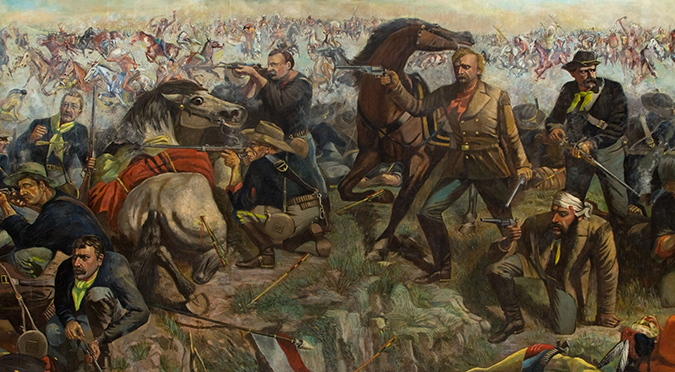
Custer’s Last Stand
August 10, 2017
Alexander (the Great) – Part II
October 19, 2017Richard III – King of England: 1452-1485
“The king’s name is a tower of strength.”
– Shakespeare (Richard III, Act 5 Scene 3)
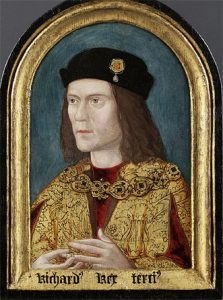 Richard the Third was only king for two years, but over 500 years later he’s still one of the most notorious monarchs to ever live. He was even the villain of a Shakespeare play! But here’s the thing: modern historians are pretty sure that all that stuff about Richard being the worst king ever was all made up. Evidence suggests that it may have been an elaborate propaganda campaign, all because Henry Tudor (aka Henry VII) took over in his place and wanted to make himself look good.
Richard the Third was only king for two years, but over 500 years later he’s still one of the most notorious monarchs to ever live. He was even the villain of a Shakespeare play! But here’s the thing: modern historians are pretty sure that all that stuff about Richard being the worst king ever was all made up. Evidence suggests that it may have been an elaborate propaganda campaign, all because Henry Tudor (aka Henry VII) took over in his place and wanted to make himself look good.
So without further ado, here’s the real story… well from what we understand…
Richard (the Third) was born in Northamptonshire, England – where he grew up in Fotheringhay Castle. Richard was just three years old when his family, the House of York, went to war with the Lannisters Lancasters in a little dispute known as The War of the Roses, which was basically George R.R. Martin’s inspiration for “Game of Thrones”.
It all started on May 22nd, 1455, when Richard (the Duke of York), attacked King Henry the Sixth’s army in what is now known as the First Battle of Saint Albans.

The War of the Roses but with dragons…
Both the Lancasters and Yorks were technically related through a super complicated semi-incestuous family tree reaching back to King Edward III (1327-1377) and both had a rightful claim to the throne. After the fallout from the Hundred Years War with France, the realm was not in good shape and it didn’t help that King Henry VI was mentally unstable. Long story short, the Lancasters had been in power ever since Henry the Fourth took control from Richard the Second and the House of York wasn’t having any of that, so they decided to take the crown by force.
What happened next was basically a 30-year-long game of musical chairs, as both sides fought and manipulated their way into power. Ultimately their were FIVE different rulers in just three decades. Richard III lost his brother, uncle, and father to the war in 1460.
By far the bloodiest battle of the entire war was the clash between the forces of Edward IV and Margaret of Anjou in March, 1461. The gruesome fight took place in the middle of a blizzard, near the village of Towton. For 10 excruciating hours, 80,000 combatants clanged swords and dodged arrows as they tried not to freeze to death in the middle of the snowstorm! Upwards of 40,000 men died, causing a river to literally run red with blood.
It is still the deadliest battle in British history.
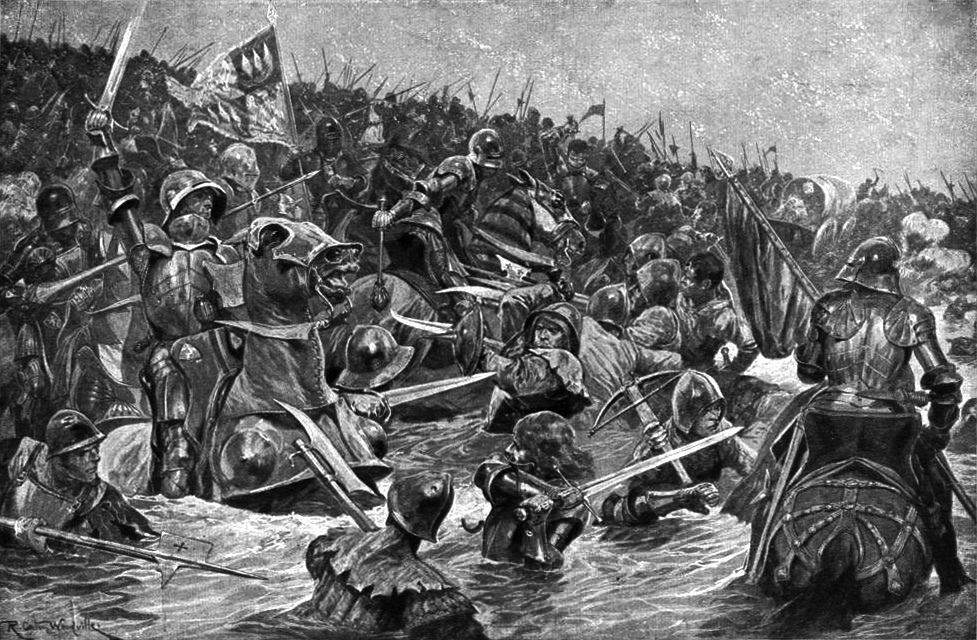
Soon after, Edward the Fourth took power and Richard the Third became a prince and the Duke of Gloucester. Once Richard was old enough, he joined his brother in invading Scotland and earned a name for himself. Richard III was put in charge of northern England and established the Council of the North. When Edward #4 died in 1483, his oldest son took the throne as Edward V – at just 12 years old.
That’s when Richard (the Third), Edward the Fifth’s uncle, made his move. Richard appointed himself the new King’s Lord Protector – basically making him a temporary King in young Edward’s place until he came of age, at 14. Richard then sent Prince Edward away to the Tower of London where he lived under house arrest “for his own protection”. Richard’s next move to consolidate power was arresting any and all potential opposition on trumped up charges of treason.

Shortly after, Richard III convinced Edward’s mom to hand over her other son, his nine-year-old brother, the Duke of York (also Richard), under false pretenses. Richard III claimed it was to prepare them for Edward’s coronation ceremony, but in actuality, it was to usurp the throne from both of them. Richard the Third locked both of his nephews away in the Tower of London. He even had Lord Hastings (Edward’s loyal protector) put to death! Which was honestly kind of a jerk move, no matter how you slice it.
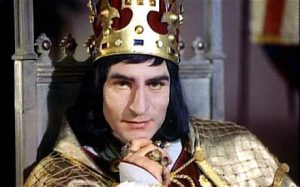
“Check out my sweet Burger King crown.” – Richard III
Richard III then postponed the coronation of Edward V to November 9th to give him enough time to seize the crown. In less than two weeks, Richard turned the entire kingdom over to his side by claiming that his nephew’s right to the throne was illegitimate because Edward IV was engaged to another woman prior to having both Edward V and Richard (the younger). After manipulating his way into power, on July 6th, 1483 – Richard the Third became the new King of England.
King Richard’s reign only lasted for two years, but a lot went down in that short period of time. According to William Shakespeare’s play (“The Tragedy of Richard III”), King Richard was an evil hunchback of a tyrant who killed 12 people, including numerous loyal advisers: Lady Anne, Clarence, Buckingham, and his two nephews! Shakespeare portrayed Richard as “the son of Hell”, an over the top villain who “know’s t no law of God nor man”. In actuality Richard was definitely an @#$, but he might not have been a completely terrible king, just a terrible person. During his very abrupt tenure as England’s monarch, Richard the Third made strides in easing tensions with the Lancasters and Scotland, along with numerous reforms.
As far as the mysterious disappearance of Richard’s nephews, there’s a number of theories as to what actually happened, and especially in recent years there have been serious doubt cast on the idea that Richard murdered them. Some think that Richard hired Sir James Tyrell to finish them off, while others claim Henry Stafford, the 2nd Duke of Buckingham may have taken them out with his own eyes set on the crown. Many historians however think that Henry Tudor aka Henry the Seventh was the real one behind their disappearance in his attempt to secure his claim to the throne.
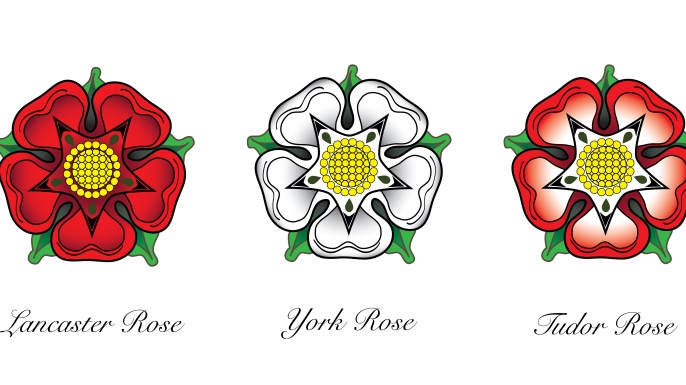
In 1485, Henry Tudor, the Earl of Richmond, began to raise an army against King Richard under a flag of unity. Henry Tudor had been loyal to the House of Lancaster and now championed their cause. Henry’s plan was to overthrow Richard III and marry his niece, Elizabeth of York, to cement his claim to the throne, thus uniting the families, the red rose of Lancaster and the white rose of York, under one banner: his own.
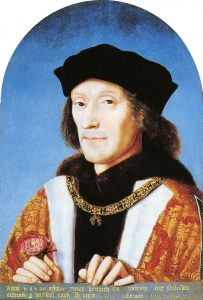
Henry Tudor
Henry and his army crossed the English Channel and arrived in Wales on August 7th – backed by the French. Word of Henry’s impending invasion reached Richard a few days later and by the 16th, Richard’s forces were ready to intercept. Henry had anywhere between 5,000 and 6,000 troops under his command with the help of the Earl of Oxford, which were boosted by many who dropped what they were doing and switched allegiances to join up in the march against King Richard. Richard himself had a loyal army estimated to have had as many as 12,000 men!
King Richard himself rode into battle, with a crown atop his armored head.
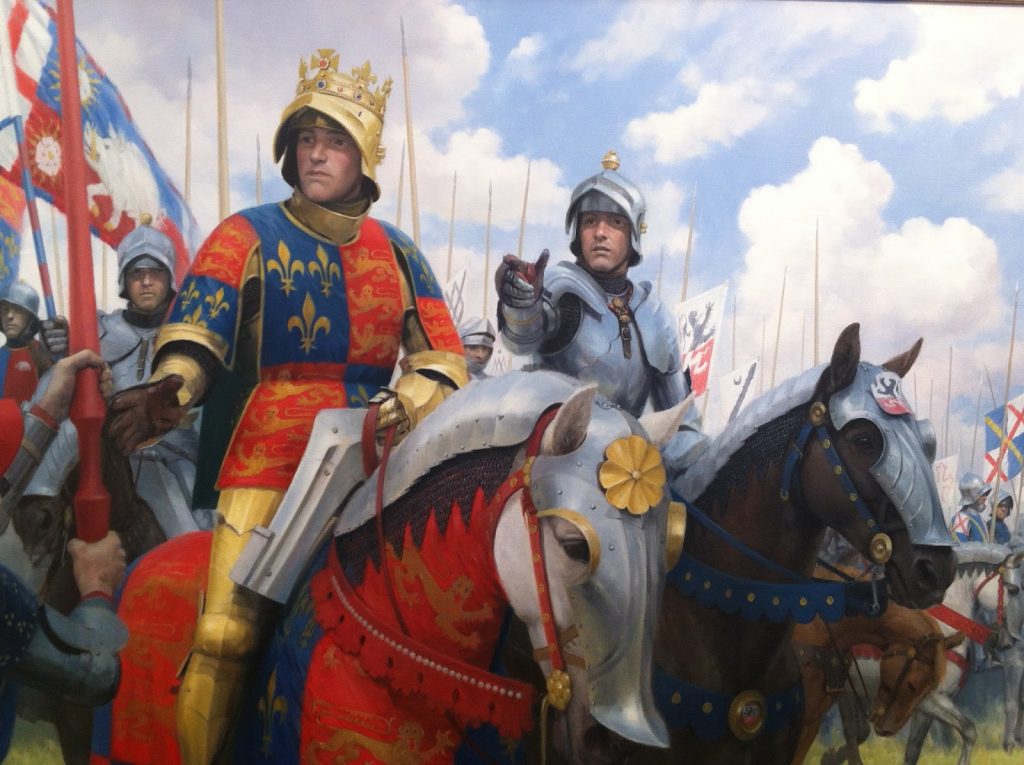
On August 22nd, 1485, the Battle of Bosworth Field would change the fate of England, forever.
Richard decided to split his forces into three – with troops commanded by the Duke of Norfolk and the Earl of Northumberland on each side of his own position atop Ambion Hill with a perfect vantage point of Henry’s approaching army across a field from the west. As Richard ordered his archers, cavalry and cannons into place, he noticed another army, standing off to the south. It was Sir William Stanley and a force of 6,000 men. The Stanley family had shown loyalty to Richard III over the last couple of years, so naturally he had assumed they had answered his call to arms and that his army was ready to fight for their King. It turns out Stanley’s family had secretly supported a conspiracy to overthrow the Yorks behind Richard’s back, Sir William was there to back Henry!

During the fray, Richard III spotted Henry’s standard in the distance and decided to take him on, mono y mono. King Richard and his cavalry of 200 soldiers charged headfirst downhill at Henry’s vanguard! The fighting was fierce as bodies began to pile up around them. The tide of the battle began to turn against Richard’s forces. At some point during the fighting, Richard was flung off his horse.
The king looked back towards his men and realized that his rear guard, led by the Earl of Northumberland, weren’t charging in to help him. They just stood by and watched. He’d been betrayed! Richard was furious. Reportedly, he was offered a horse to flee to safety by one of his men, but he responded, “God forbid I yield one step. This day, I shall die as a king or win.”
While Richard knocked over a 6-foot 8” giant named Sir John Cheyney and killed Sir William Brandon, Henry’s standard bearer, Richard’s own standard bearer had his legs lobbed off. According to John Rous’s account, “to his credit, though small in body and feeble of limb, he bore himself like a gallant knight and acted with distinction as his own champion until his last breath.”

Richard hacked his way through the chaos, advancing towards Henry. They were surrounded and he had nothing left to lose. Henry retreated behind his personal bodyguards while the Earl of Oxford fended off Richard’s men. That’s when Sir William Stanley intervened. When he saw that Henry was in trouble, Stanley led a cavalry charge into Richard’s line. “Treason!” the King shouted. Ultimately, it was Stanley’s treachery that sealed Richard’s fate.
“King Richard, alone, was killed fighting manfully in the thickest press of his enemies.” Richard was a sword’s length away from Henry when he was struck down by a halberd to the head. The blade struck such a hard blow that his helmet was driven into his skull! The killing strike came from a Welshman. With their king dead on the battlefield, Richard’s forces retreated.
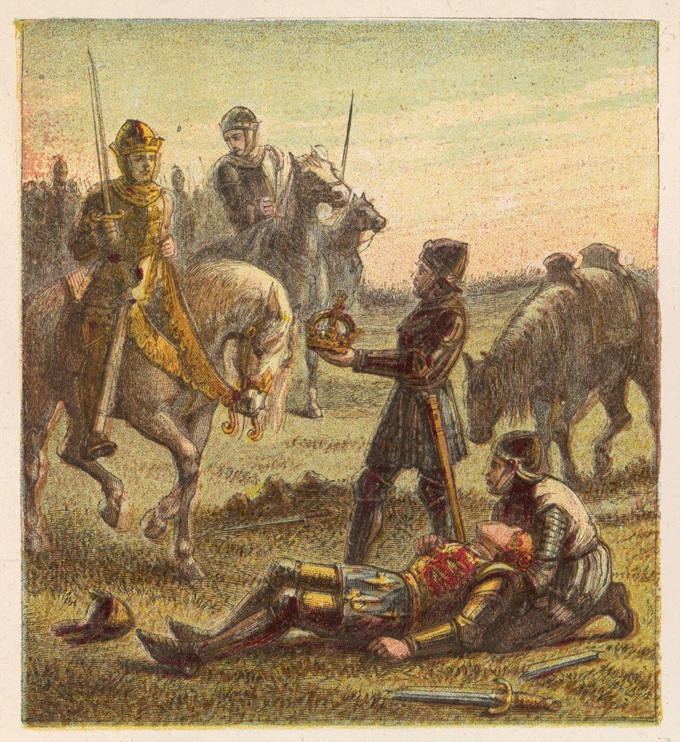
Richard the Third had fallen, the War of the Roses was over.
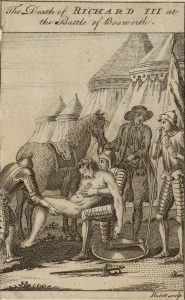
Despite being hopelessly outnumbered, Henry’s army came out on top with far fewer casualties. Shortly afterward, Henry Tudor declared himself “King by Conquest” and was crowned by Lord Stanley with Richard’s blood-stained circlet, beneath an oak tree at the top of a hill near the battlefield. Henry Tudor became Henry the Seventh – and later after marrying Elizabeth of York became the father of Henry the Eighth (and grandfather of Queen Elizabeth the First). Henry VII hired chroniclers to write things from his side of the story, painting the Battle of Bosworth as a battle of good triumphing over evil. Henry tarnished Richard’s legacy in order to make himself look like a hero.
Following his death, Richard the Third was stripped naked, shaved and trussed up like a hog on the back of a horse, paraded around the countryside before being displayed in Leicester. Eventually he was (supposedly) buried at Greyfriars Church with a marble and alabaster monument, but over the years the exact location of his final resting place was lost to time…
Then in 2012, archaeologists discovered something rather unexpected: Richard’s skeletal remains were found buried under a parking lot! The bones were examined and it was confirmed to be the remains of the last English king to die in battle. The skeleton had a total of 10 injuries, most notably a fracture at the back of the skull. Richard the Third’s remains were reburied in a tomb at Leicester Cathedral on March 26th, 2015.

Was Richard the Third really a terrible tyrant? Or was he the unlucky victim of bad PR? We may never know the full story, but the truth is probably somewhere in the middle. One thing’s for certain, Richard was the last king of the Plantagenet Dynasty, the last of the House of York, and his death marked the end of an era…

Erik Slader
Thanks for reading! If you’re a fan of the blog, be sure to listen to the Epik Fails of History podcast and check out my all new “EPIC FAILS” book series – available now wherever books are sold!
Sources:
“Dark History of the Kings and Queens of England” by Brenda Ralph Lewis
“The Book of Ancient Bastards” by Brian Thornton
“Richard III” by William Shakespeare
https://www.biography.com/people/richard-iii-9457120
http://www.historyextra.com/feature/tudors/10-things-you-need-know-about-battle-bosworth
http://www.cnn.com/2015/03/22/europe/richard-iii-burial-5-things/index.html
http://www.history.com/news/9-things-you-should-know-about-the-wars-of-the-roses
http://www.richardiii.net/2_1_0_richardiii.php
http://www.telegraph.co.uk/history/11420381/How-bad-a-guy-was-Richard-III.html
http://www.independent.co.uk/news/uk/home-news/the-princes-in-the-tower-will-the-ultimate-cold-case-finally-be-solved-after-more-than-500-years-10466190.html



 King John vs the Magna Carta
King John vs the Magna Carta


2 Comments
[…] second King of England of the Tudor dynasty. His father, Henry #7, had become King after defeating Richard the Third, during the War of the Roses, before marrying Elizabeth of York. Henry (the 8th) was one of the only of his male siblings to […]
[…] covered on this blog), but perhaps none more vilified than King John of England (except for maybe Richard the Third?). After all, John was Robin Hood’s nemesis. But does he really deserve such a tarnished […]